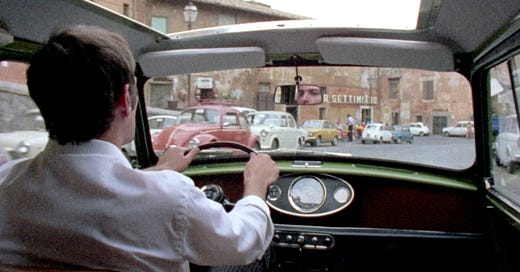History Lessons (1972, Straub-Huillet)
Wednesday 11th of December, 5pm in the Professor Stuart Hall Building LG02
Join us on Wednesday the 11th of December from 5pm (film starts at 5:15pm) in the Professor Stuart Hall Building room LG02 for a screening of Jean-Marie Straub and Danièle Huillet’s History Lessons (1972). The film is 1 hour 28 minutes long so the screening will be finished by 6:45pm.
Jean-Marie Straub and Danièle Huillet were a French duo of Marxist filmmakers, mainly working in Italy and France, who dealt with alternative, critical histories in performative and experimental cinematic forms. Although their films can be categorised as documentary and docu-fiction, the way they reimagine landscapes and contexts, as well as the use of long, mundane, dialogical encounters – often in the scope of a radical and materialist reconciliation of our view of humanity – mean they tend to transcend most conventions of genre, cinema and what an image can say as a whole.
History Lessons retells the specific moment in history in which Julius Caesar rose to power in ancient Rome, adapting from Brecht’s novel The Business Affairs of Mr. Julius Caesar. Subverting the audience’s sense of time and space, the film is contained within an air of contemporary settings and dialogues, emphasizing the cold and bare similarities to today’s expressions of democracy. Straub-Huillet’s radicalism in fact lies in the way they ask questions about how form is constructed and about material representations for cultural historical truths.
French film critic Serge Daney once wrote about their work:
To Nietzsche’s claim that “the only being known to us is being that represents itself”, the Straubs would respond: only those who resist exist for sure. Resist nature, language, time, texts, gods, God, chiefs, Nazis. Mother and father. This is how the shot, basic atom of the Straubian cinema, is the product, the “reste” (remainder), or rather the “restance” (remaining)* of a triple resistance: texts resisting bodies, places resisting texts, bodies resisting places. One has to add a fourth: the public resisting shots “designed” like that, stubborn resistance of cinema’s public to something intractable, something which renounces it as a public.


